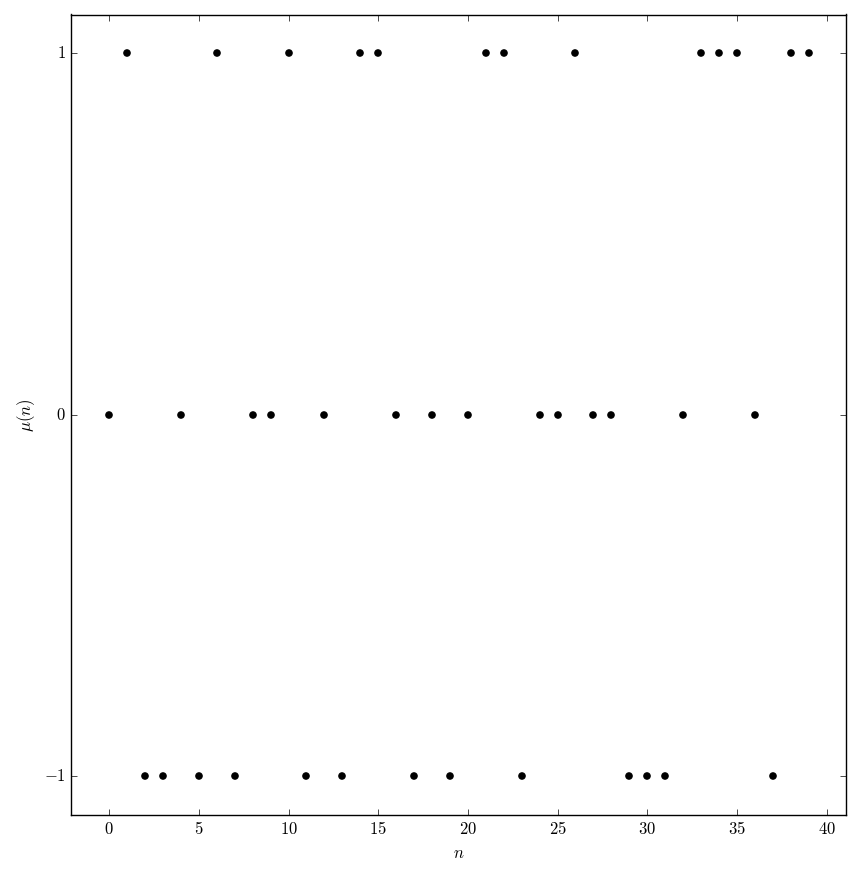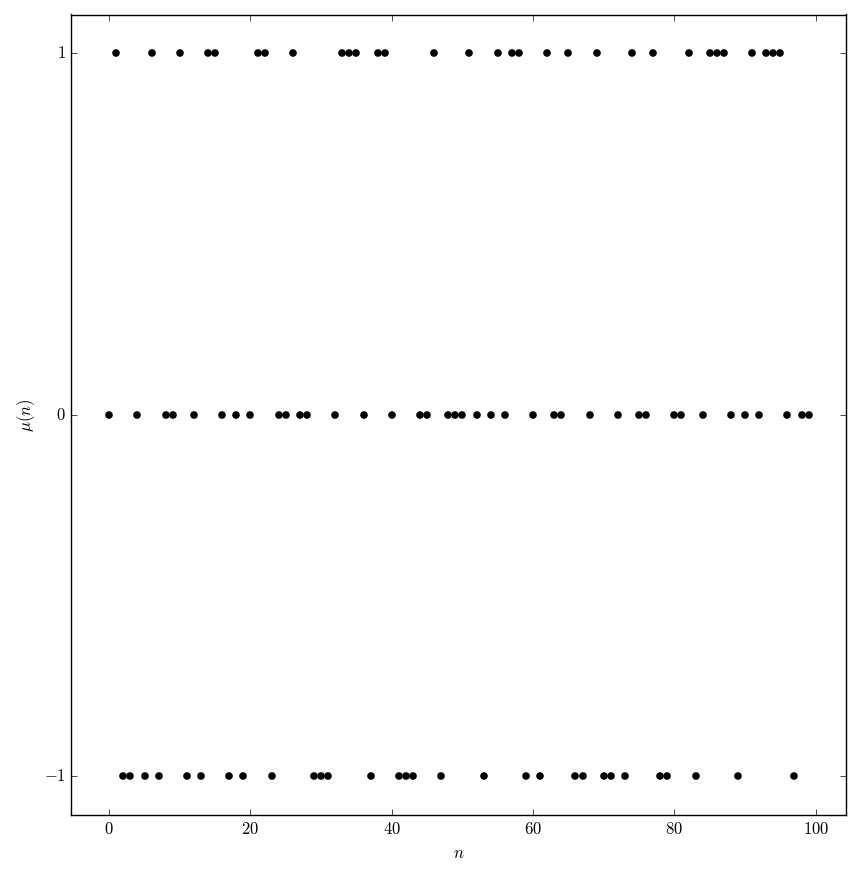Difference between revisions of "Möbius"
| Line 8: | Line 8: | ||
<div align="center"> | <div align="center"> | ||
<gallery> | <gallery> | ||
| − | File: | + | File:Mobiusplot,on0to40.png|Graph of $\mu$ on $[0,40]$. |
| − | File: | + | File:Mobiusplot,on0to100.png|Graph of $\mu$ on $[0,100]$. |
</gallery> | </gallery> | ||
</div> | </div> | ||
Revision as of 09:43, 16 June 2016
The Möbius function is the function $\mu$ defined by the formula $$\mu(n) = \left\{ \begin{array}{ll} 1 &; n \mathrm{\hspace{2pt}is\hspace{2pt}a\hspace{2pt}squarefree\hspace{2pt}positive\hspace{2pt}integer\hspace{2pt}with\hspace{2pt}even\hspace{2pt}number\hspace{2pt}of\hspace{2pt}prime\hspace{2pt}factors} \\ -1 &; n \mathrm{\hspace{2pt}is\hspace{2pt}a\hspace{2pt}squarefree\hspace{2pt}positive\hspace{2pt}integer\hspace{2pt}with\hspace{2pt}odd\hspace{2pt}number\hspace{2pt}of\hspace{2pt}prime\hspace{2pt}factors} \\ 0 &; n\mathrm{\hspace{2pt}has\hspace{2pt}a\hspace{2pt}square\hspace{2pt}divisor}. \end{array} \right.$$
Properties
Theorem: If $s \in \mathbb{C}$ with $\mathrm{Re}(s) > 1$, then $$\displaystyle\sum_{n=1}^{\infty} \dfrac{\mu(n)}{n^s} = \dfrac{1}{\zeta(s)},$$ where $\zeta$ is the Riemann zeta function.
Proof: █
Relationship between prime zeta, Möbius function, logarithm, and Riemann zeta
Videos
Mobius Function Example
Möbius Function - Introduction
Möbius Function - Merten's function
Number Theory 27: Mobius function is multiplicative

